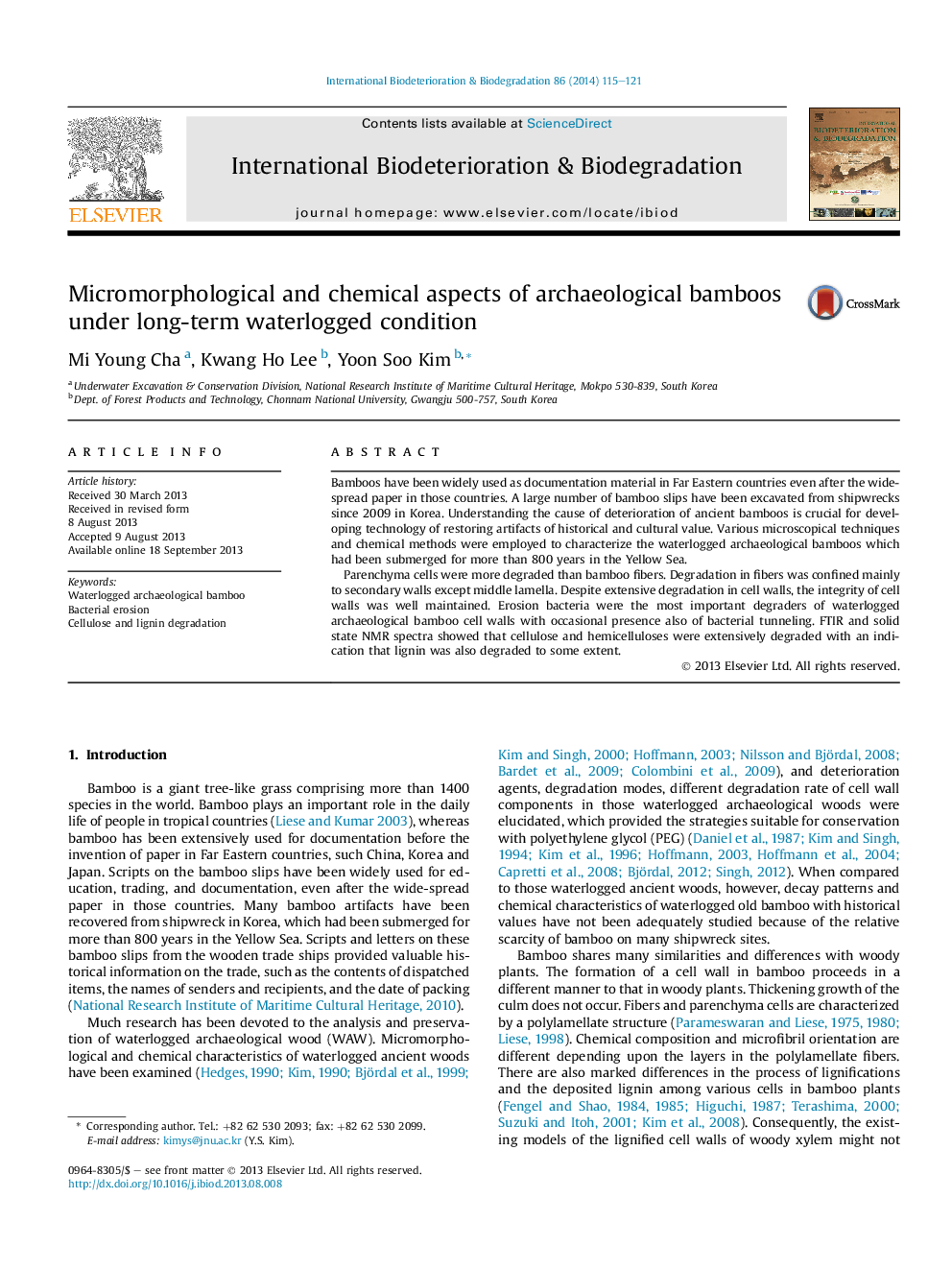| کد مقاله | کد نشریه | سال انتشار | مقاله انگلیسی | نسخه تمام متن |
|---|---|---|---|---|
| 4364861 | 1301727 | 2014 | 7 صفحه PDF | دانلود رایگان |
• The secondary layers in bamboo fibers were extensively degraded.
• Erosion bacteria were the most important degrader.
• The degradation mode was similar to that observed in waterlogged archaeological woods.
• Polysaccharides were mostly subject to degradation.
Bamboos have been widely used as documentation material in Far Eastern countries even after the wide-spread paper in those countries. A large number of bamboo slips have been excavated from shipwrecks since 2009 in Korea. Understanding the cause of deterioration of ancient bamboos is crucial for developing technology of restoring artifacts of historical and cultural value. Various microscopical techniques and chemical methods were employed to characterize the waterlogged archaeological bamboos which had been submerged for more than 800 years in the Yellow Sea.Parenchyma cells were more degraded than bamboo fibers. Degradation in fibers was confined mainly to secondary walls except middle lamella. Despite extensive degradation in cell walls, the integrity of cell walls was well maintained. Erosion bacteria were the most important degraders of waterlogged archaeological bamboo cell walls with occasional presence also of bacterial tunneling. FTIR and solid state NMR spectra showed that cellulose and hemicelluloses were extensively degraded with an indication that lignin was also degraded to some extent.
Journal: International Biodeterioration & Biodegradation - Volume 86, Part B, January 2014, Pages 115–121
